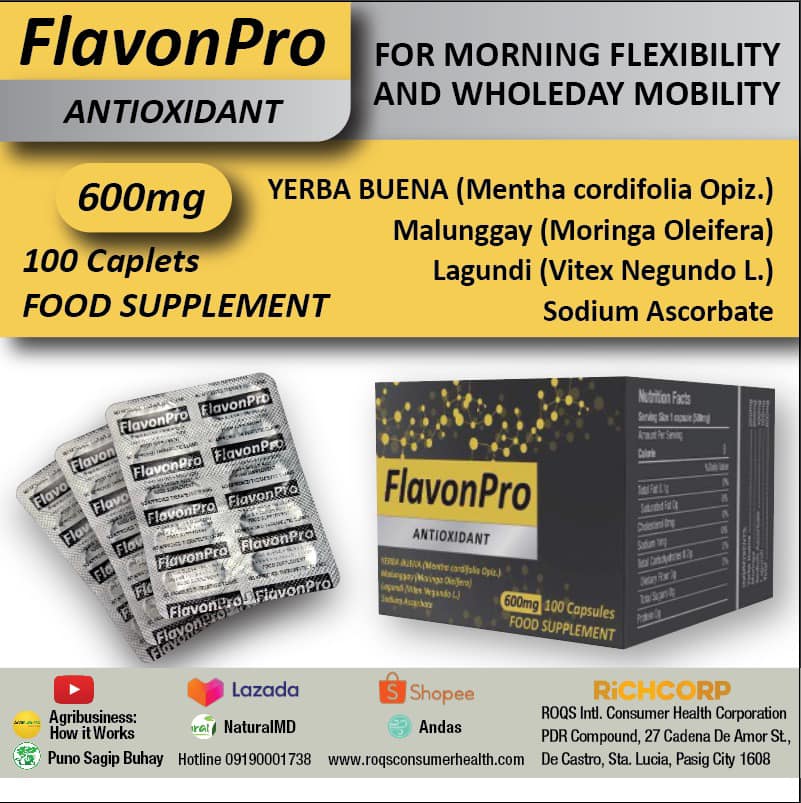Ever wonder what rootcrops and corn can do to our body?
Rootcrops and corn are good sources of carbohydrates which can be included in the diet to meet the energy and nutrient requirements of the body.
Rootcrops also contain dietary fiber, vitamin C, calcium, phosphorus and iron.
Examples of rootcrops locally available are sweet potatoes, purple yam, taro, cassava and potatoes.
Corn, on the other hand, is also a good source of dietary fiber, B-vitamins, ascorbic acid, folate and phosphorus. Popular varieties of corn are white and yellow.
A study conducted by the Food and Nutrition Research Institute of the Department of Science and Technology (FNRI-DOST) determined the effects of local root crops in lowering cholesterol levels among humans with moderately-raised cholesterol levels.
The study showed that eating kamote and cassava significantly decreased the total cholesterol levels of adults. Specifically, cassava was shown to have significantly decreased LDL-cholesterol levels.
The study concluded that rootcrops, due to their dietary fiber content, could have a significant role in the reduction of lipid biomarkers.
Another study by the FNRI-DOST explained that dietary fiber that is fermented in the large intestine (or colon) binds with toxins and is excreted in the feces. Toxins in the colon contribute to the formation of tumors and cancer.
Folate present in corn is good for the heart because it lowers the level of homocysteine, an amino acid responsible for damaging the blood vessels and increasing the blood clotting, which may lead to heart attack.
Corn also contains carotenoid beta-cryptoxanthin, which aids in lowering the chances of lung cancer.
Other health benefits from corn include the increase in memory levels due to thiamin which is important in brain cell functions and together with panthothenic acid, helps in energy production and stress reduction.
Glycemic index is the individual’s glucose response to a food as compared to a reference food and tells whether and how a food will raise blood sugar levels.
Rootcrops and the white variety of corn have low glycemic index at less than 60, which means that they are beneficial in the proper control and management of diabetes mellitus and in maintaining normal weight.
Message 5 of the Nutritional Guidelines for Filipinos (NGF), developed by a technical working group (TWG) headed by the FNRI-DOST, states that one should eat more vegetables, fruits, and root crops. In the Daily Nutritional Guide for lactating women, it is suggested that they consume 6-7 servings of rice, corn, rootcrops, and their substitutes.
Root crops and corn have a lot of nutritional and health benefits, so why not include them in your daily diet?
Recipes with root crops and corn are featured in the 2011 FNRI Menu Guide Calendar.
The calendar includes 12 monthly-7 day cycle menu, estimated energy and nutrient contribution per recipe, information about root crops and corn, and nutrition and food tips for keeping a healthy body.
For more information on food and nutrition, contact: Dr. Mario V. Capanzana, Director, Food and Nutrition Research Institute, Department of Science and Technology, General Santos Avenue, Bicutan, Taguig City; Tel/Fax Num: 8372934 and 8373164; email: mvc@fnri.dost.gov.ph, mar_v_c@yahoo.com; FNRI-DOST website: http://www.fnri.dost.gov.ph. FNRI-DOST S & T Media Service: Press Release – MARY ANN R. DEVANADERA




